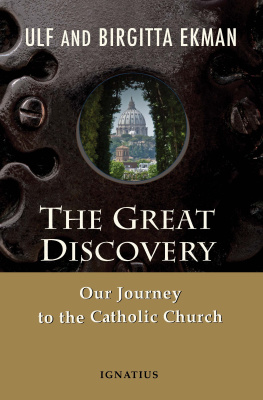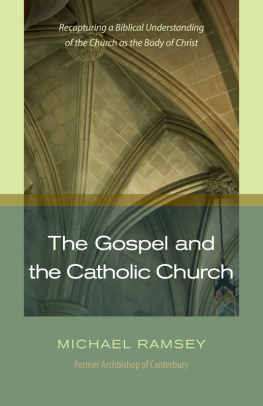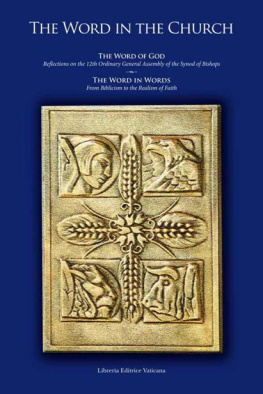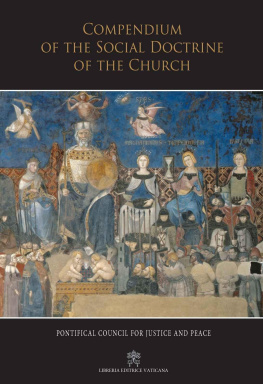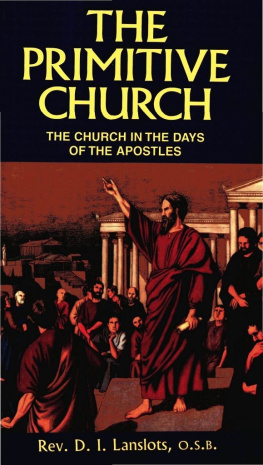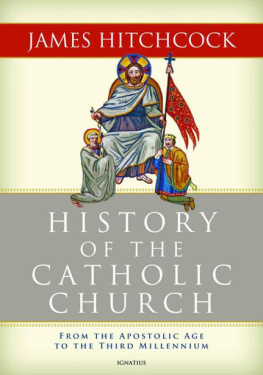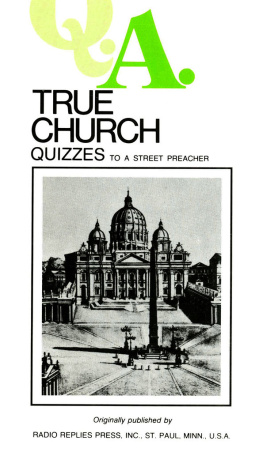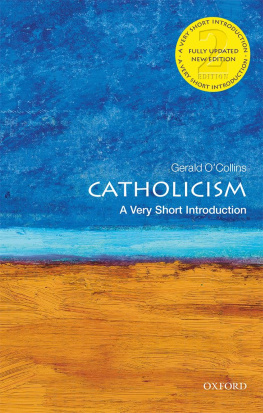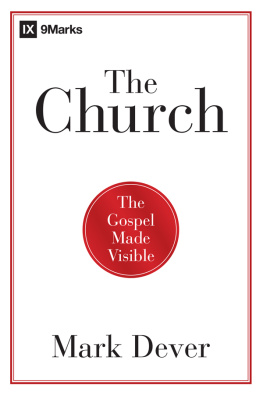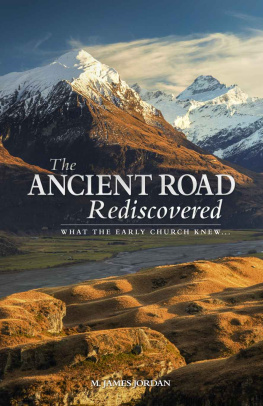
ULF AND BIRGITTA EKMAN
The Great Discovery

Our Journey to the Catholic Church
Translated by
Sister Clare Marie, O.C.D.
IGNATIUS PRESS SAN FRANCISCO
Original Swedish title:
Den stora upptcktenvr vg till katolska kyrkan
2015 by Ulf and Birgitta Ekman
English translation edited by David Michael
Frontispiece photograph by Rickard Eriksson
Cover photograph: The Dome of Saint Peters Basilica
Photograph by Galen Crout
Cover design by Riz Boncan Marsella
2017 by Ulf and Birgitta Ekman
All rights reserved
ISBN 978-1-58617-222-0 (PB)
ISBN 978-1-64229-037-0 (EB)
Library of Congress Control Number 2018931262
Printed in the United States of America
We wish to dedicate this book especially to our four beloved
sons. Through all the years, the love in our family has
been our great joy and the point of reference in our lives.
The family is Gods wonderful gift to man, and
we are eternally grateful for ours!
Foreword
by Anders Cardinal Arborelius
leader, who is both highly esteemed by many and questioned by others, becomes Catholic, it stirs up strong reactions in our country, but when thousands of immigrant Catholics leave their faith for another, it never makes the headlines.
How did this journey begin? It is important to stress that it is a question of a very long and thorough process, a dedicated search for the whole truth that is revealed in Jesus Christ and that we, as Catholics, believe has been entrusted to the Catholic Church. The reader can imagine the power of God drawing people in different ways by the quiet murmuring of the Holy Spirit, who wants to open our hearts to all that he desires to give us. Step by step, Birgitta and Ulf describe this journey of discovery into the treasury of the Christian tradition. Saint Birgitta had an important role to play when the process began. Show me the truth, and make me willing to walk in it. Birgittas prophetic words are truly fulfilled in the path of her namesake today. It seems to be an undeniable sign of Gods humor that both of these Birgittas were blessed with an Ulf for a spouse. Again, it must be pointed out that this book is not merely Ulf Ekmans, but that it is just as much Birgittas. It is precisely because of this that it is also so unique. Classic conversion stories such as the Confessions of Saint Augustine, Saint Teresa of Avilas Book of Her Life, and John Henry Newmans Apologia Pro Vita Sua are the works of individual persons, as is also the book The Holy Way of the Pilgrim, by the seventeenth-century convert Lars Skytte. I was also struck by parallels between Ulf and Birgittas searching and that of another couple: Rassa and Jacques Maritain.
What is it, then, that would lead these two people on their path into the Catholic Church? In an animated way, Ulf and Birgitta describe those peopleboth heavenly friends, most especially the Virgin Mary, and those who are still living here on earthand those truths which drove them forward on their journey. In many respects, their time together in the Holy Land was very decisive. It was also there, in fact, that I met Ulf Ekman for the first time, and at Notre Dame, the Vaticans center in Jerusalem. It is perhaps not so unusual that in the very land where Jesus lived, and where everything speaks of the full Christian tradition, the Catholic faith can be found. At the same time, everyone who visits this land also knows that one encounters weakness and division there in all their stark reality. Even this is a part of the comprehensive Catholic view. God does not abandon his Church. However much we Catholics do to cause the weakness and division by our sin and failures, the Lord does not allow us to darken the Churchs truth and inner beauty. But one really needs a deep faith to accept that! In the Holy Land, the deep continuity and unity with our roots in the Old Covenant are also clear. This is also an integrated part of Tradition with a capital T, and when one begins to accept this fact of our faith, then one is really a good way into the Catholic reality.
Step by step, the Ekman spouses continued their journey of discovery into Catholicism. The dialogue between them about all of this is one of the most important messages of this book to our individualistic age. We are so used to the individual person always being the measuring stick. At the same time as we long for communion in the deepest part of our being, we are often fixed on ourselves. The communal search for truth as dialogue with another person is something classic in Christian tradition. We need only think of the disputations of the Middle Ages. But in the world of today, we have often lost this perspective. That is why it is so exciting to see how Ulf and Birgitta juggled their discoveries in the Catholic Church between themselves: sacraments, Mary, the pope. Just this part of the process was certainly decisive. I believe that many seekers remain standing halfway just because they have no one with whom to dialogue. Faith grows in community. We are created in the image of the Triune God, and our way into the fullness of the faith is not only an individual thing; one does not discover the communion of the Church only on ones own. Here we truly see that together it is possible to grow in the communion of the Church.
Here many usually react strongly; it does not sound at all ecumenical or tolerant. Nevertheless, it is an uncompromising demand that the person who has truly discovered and understood that God has instituted the Catholic Church for the sake of our salvation and entrusted her with the mission of proclaiming and preserving the full truth of revelation must also belong to her. It is actually an obvious fact for every logical, thinking person. Nevertheless, this point is very difficult for our relativistic and supposedly tolerant age to accept. For the one who wishes to become Catholic, it is an indispensable condition to realize this. One does not become Catholic for emotional reasons, because of the beautiful liturgy or because there are many wonderful saints or a beautiful spirituality. These may attract one to the Church, but in the end, the decision comes down to the question of truth and salvation. When one has realized this, then and only then is the time ripe for being received into the fullness of the Catholic communion. Birgitta and Ulf realized this, and for this reason they also had to take that step, even though, in reality, everything in their lives and the atmosphere in which they lived spoke against this.
At the same time, it is difficult for many to see that the Catholic Church places great importance on ecumenism. They think it points rather to self-righteousness and a lack of humility for the Church to assert that the fullness of truth and salvation have been, in a unique way, entrusted to her and her guardianship. But this also means that the Church wants to grow in a unity of love with those who, to a greater or lesser degree, have a part of the same truth and are called to the same salvation. We, as Catholics, truly rejoice over all that unites us with other churches and denominations. The one who becomes Catholic should not do so because of a discontent with his former denomination. It is a part of the conversion process to reconcile with and be thankful to the church in which one received baptism and was able to receive so much of the Christian faith. A convert who speaks ill of or looks down upon his former denomination has not yet taken the complete step into the Catholic unity, and there is a risk that he will sooner or later remain fixed in the same negative attitude toward the church that he has joined. That does not mean that one is blind to what is lacking in the non-Catholic denominations, but how could these have and communicate everything when they have broken away from full unity? Instead, we rejoice over all that is true and genuine that can, in fact, be found in these denominations. This attitude also becomes clear in this book. Perhaps some readers were expecting, or even hoping, for some critical and hard words toward the Word of Life congregation. But oh, how they were mistaken! Here we see that Ulf and Birgitta have also truly made the Catholic view of ecumenism their own. With gratitude, they look back upon all the good they received from Word of Life. It is not their task to chastise or interrogate their former congregation. I believe that this has also been understood by the members of Word of Life. It made a great impression on me that so many leaders from Word of Life wanted to be present when Birgitta and Ulf were received into full communion with the Church in the chapel of the Brigittine Sisters in Djursholm.
Next page
